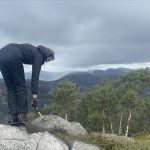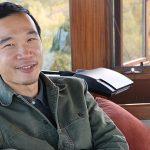lchandrasekaran
- December 13, 2016
- lchandrasekaran
"Don’t get old if you can help it,” climatologist George Denton joked at the Comer Abrupt Climate Change Conference in Wisconsin this fall. But he
- November 29, 2016
- lchandrasekaran
Glaciers and forests show jagged retreats in Jill Pelto’s paintings while the sky above heats up. Pelto, a graduate student studying climate science at the
- November 29, 2016
- lchandrasekaran
Cosmic rays, hurling across the galaxy near light-speed, generate a time machine on Earth for us to measure the retreat of the glaciers and the
- November 3, 2016
- lchandrasekaran
"Green city planning to create green roofs, green parks and deployment of green assets in places where we are worried about heat effects is necessary,”
Categories
Latest Articles
December 30, 2024
December 30, 2024
Contact Information
Abigail Foerstner, Managing Editor and Medill Associate Professor




